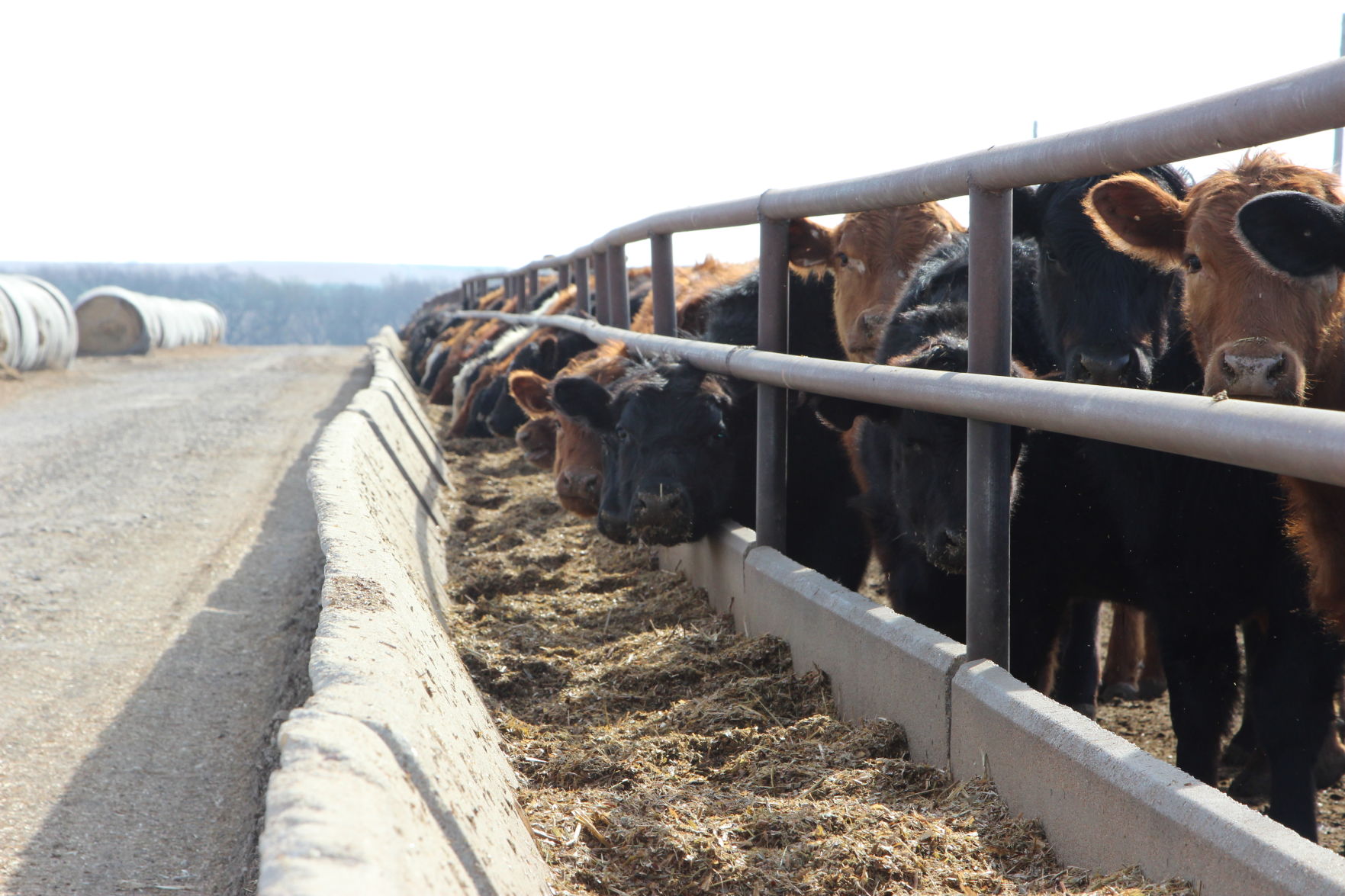Livestock owners may be already feeling the pinch when it comes to feeding their animals. Some may have already considered their options as large portions of the High Plains region are currently under drought conditions, with some areas already at the D4 ranking or exceptional drought by the Drought Monitor from the University of Nebraska-Lincoln.
Forage sorghum could be one of the possible options when pickings get a little slim for roughages in cattle diets. Compared to traditional corn silage, forage sorghum silage packs about the same punch, said Kim McCuistion, United Sorghum Checkoff Program animal nutrition director. Factors to think about when growing or using forage sorghum in a diet are do you seek pasture for forage or need hay production? Are you making silage, or do you simply need biomass to feed cattle and are therefore more concerned about yield versus quality?
Those considerations dictate choices as to what type of forage sorghum will best fit the situation. It takes a bit of time to sort through all the forage sorghum types used for forage, as there are a lot of hybrids and types that could fit into a situation.
“We have forage sorghums, sorghum sudan grass hybrids, straight sudan grasses and then within those a lot of the time we’ll have different traits show up,” McCuistion said. “But the main thing I think you need to ask yourself is, what is the purpose.”
McCuistion explained the difference in a couple of varieties of forage sorghums. For example, sudan grasses and sorghum sudan hybrids have a higher leaf-to-stem ratio than traditional forage sorghums.
“They typically have a smaller stalk, quicker regrowth, less prussic acid risk and for the most part those hybrids are going to be intermediate to a sudan grass and a forage sorghum,” she said.
Cattle can use a forage sorghum or a sorghum sudan grass pretty well down to the ground if they are stocked correctly in a grazing situation. A lighter stocking rate might not accomplish the same thing.
“Again, just an example of how you can utilize those different types of forages if you need longer term grazing and shorter term grazing and kind of how you can manage those accordingly and obviously have different results based on that,” she said.
Other varieties of forage sorghum can be more leafy, taller and later maturing than traditional grain sorghum varieties. McCuistion said at one point in time some forage sorghum varieties were associated with small grain heads and that’s not necessarily true any more.
Forage sorghum plants can be used in silage production and the yield from some varieties can be as high or higher than corn. Total digestible nutrients of forage sorghums tend to not be as high as corn, but they have other positives.
“A lot of times to get the higher quality we might have a little bit lower yielding crop,” she said. “And if we have a very high yielding crop, we may give up a little on quality.”
Conventional forage sorghum types don’t often have a trait like brown mid rib or photoperiod associated with them, but those varieties that do excel in certain areas when the situation is right. Photoperiod sensitive types won’t go into reproductive stage until the day length reaches 12 hours and 20 minutes. McCuistion studied forage sorghum at one point and during research trials saw many differences in the varieties.
“They would not have time to get the full reproductive stages,” she said of the photo period sensitive types. “We would harvest these late in the season because they just continue to grow and grow and grow. So a very high yielding crop.”
Photoperiod sensitive types provide a lot of biomass, but they also are difficult to dry down.
“Often times the stalk is thicker and can be very wet,” she said. “As a result, putting it up and managing it for silage is not the best, because it just doesn’t dry down to that 65 percent target moisture that we’re after.”
It does, however, make a great option for green chop.
“If you harvest it and immediately feed it to cattle, it is certainly an option from that standpoint,” she said.
Brown midrib characteristics have been around in forage sorghum, sorghum-sudan grasses and corn for many years. The trait was discovered in corn in the 1930s, with sorghum BMR traits being studied in the 1970s. Genetically, BMR traits reduce the amount of lignin in the remaining forage. Lignin strengthens the cell wall, making it structurally important, but it hinders digestion in some species.
“Lignin, on the animal side, we think of being a negative because it’s combined very tightly to cellulose, hemicellulose and some of those fiber components that we want digested from a plant standpoint it serves a very important role,” McCuistion said.
BMR is a genetic improvement that can be seen phenotypically. There are brown portions on the leaves and stalk that can be seen. A darker color doesn’t mean it’s a stronger BMR, just an indicator the genetic potential is there. Lodging can be an issue with the reduced lignin. And there is the possibility of yield drag with the BMR varieties, but McCuistion doesn’t see it as that big of an issue.
“I hate to make these general broad assumptions with sorghum because there’s so many varieties but you’ve just got to pick the right one,” she said.
McCuistion said to look for a number of things when picking a variety of forage sorghum:
• Adaptability to the region;
• Yield;
• Quality;
• Standability;
• Days to maturity;
• Drought tolerance; and
• Disease/insect tolerance.
Seed company representatives can be knowledgeable in picking the right varieties; you can also check with university or Extension professionals and area sorghum growers.
“Ask other people what works for them and use those same types of practices they’re doing,” she said. “There’s a great team of consultants that are out learning and those folks are a great source of information to work with moving forward on what you chose to do.”
From an animal perspective McCuistion thinks it’s important to reformulate the cattle diets to account for higher fiber and potentially lower energy or starch.
“So if you know the forage that you chose or what you have at the end of the season is a little bit lower quality than say maybe the dairy sector may want, certainly it can be fed to older, replacement dairy heifers or dry cows that might have lower energy demands and really just need to fill energy demands or forage or roughage,” she said.
But in the end, hybrid selection remains key. Private dairy nutritionist and forage consultant Chuck Grimes, who works with livestock producers to find ways to improve their feeding and silage programs, believes in first selecting the right hybrids to grow in order to meet the nutritional requirements for all groups of cattle, and then managing them accordingly throughout the crop cycle and into the feeding.
“Silage is the best form to take that crop and give it to the ruminant animal that loves it when its done right,” Grimes said. “When you have a low variation, good lactic acid fermented silage, that animal loves it.”
Under normal circumstances the animal has to have enough fiber to keep the digestive system working properly. The feed is what will help create the environment in a dairy cow, for example, to keep her healthy and producing.
“We think of it as milk, but it’s all the other factors too,” he said. “Her livelihood, getting rebred, keeping good body scores so she can rebreed in a timely manner. Those are all the factors we wrestle with in the dairy world.”
Grimes works with dairy farms and feedyards “from coast to coast, from border to border” and feeding situations run the gamut. The ones who have the more productive farms or feed yards tend to understand the “system” needed to put up good silage and make a difference in the animals.
The feeding system starts with choosing the right hybrid that will end up in the silage. It is extremely important, and in the dairy world, many are taking hybrid trials into their own hands and finding what works best for them.
“Choosing that hybrid is critical,” Grimes said. “I’ve looked intently the last 10 years with the BMR sorghums, and in the dairy world, you’ve got to manage them. They can be exceptional.”
Corn can be exceptional as well if it’s managed right. Ultimately it comes down to what the producer’s environment can handle and provide at the end.
“Weather is never going to be the same and can we stay up with it and can we make the right decision. It is critical,” he said. “We have to have people that are involved with that particular entity, under those conditions and make it happen under those conditions.”
Everything from hybrid choice to weather to packing the silage pile all lead back to how it’s managed. And if it’s not managed, you’re wasting time.
“You’ve got to have a strategy,” he said.
Kylene Scott can be reached at 620-227-1804 or [email protected].




